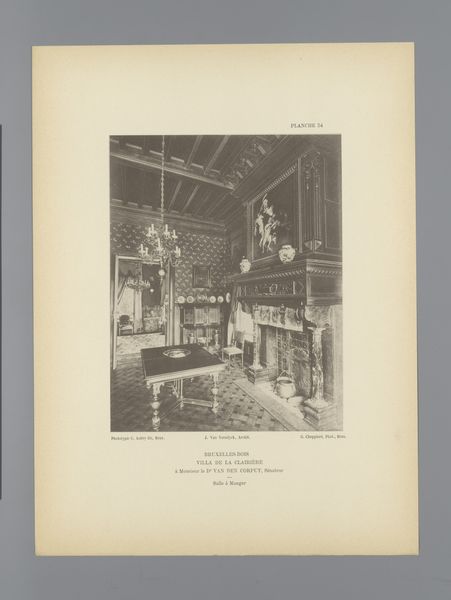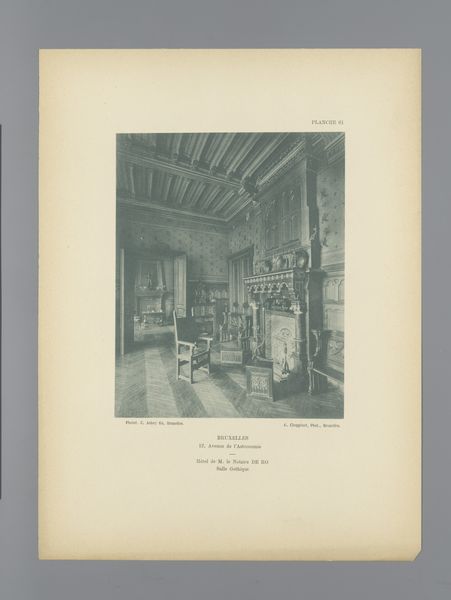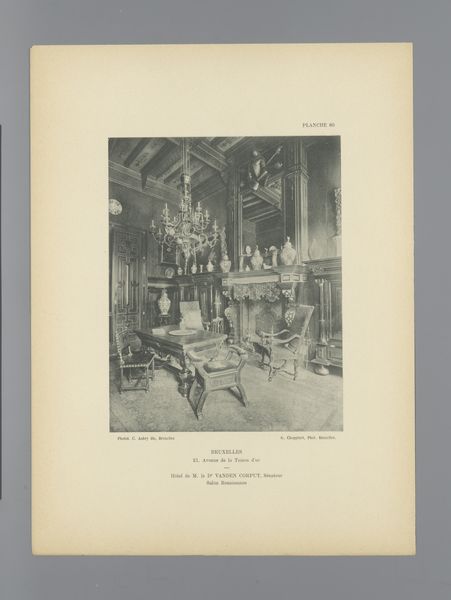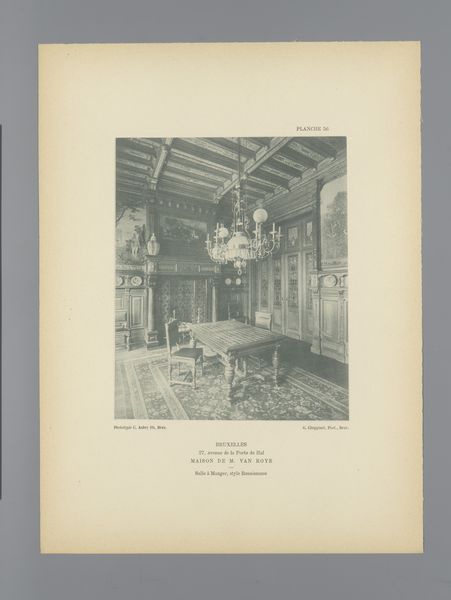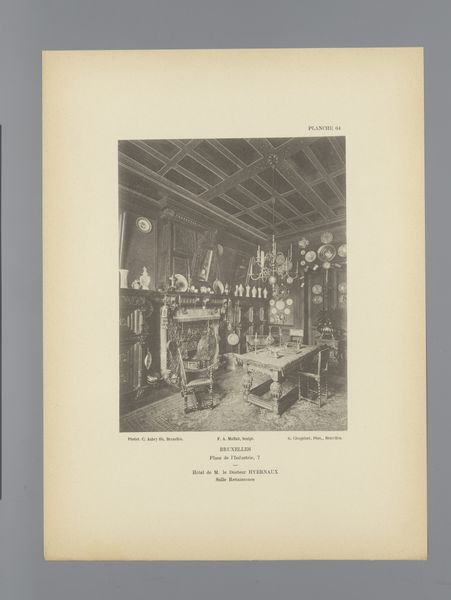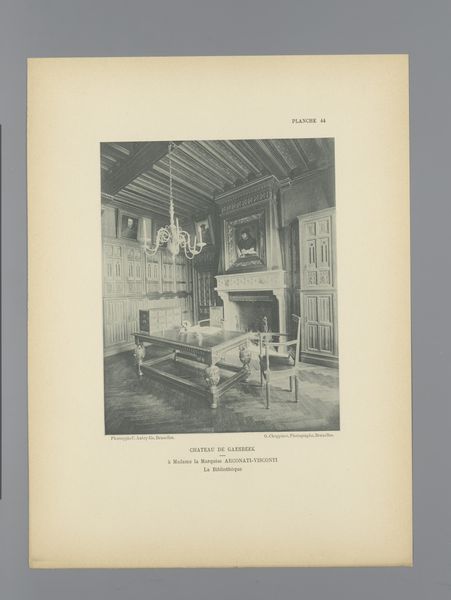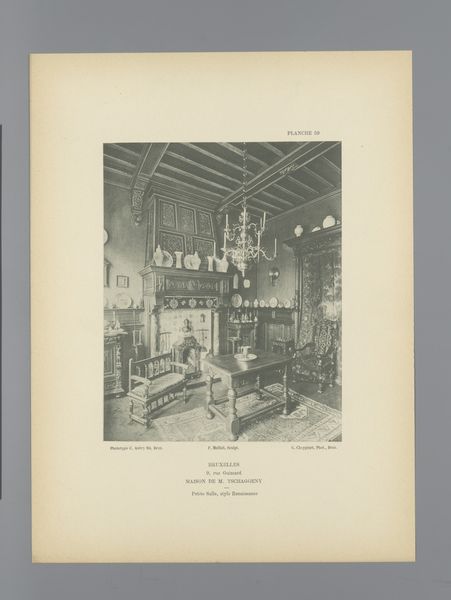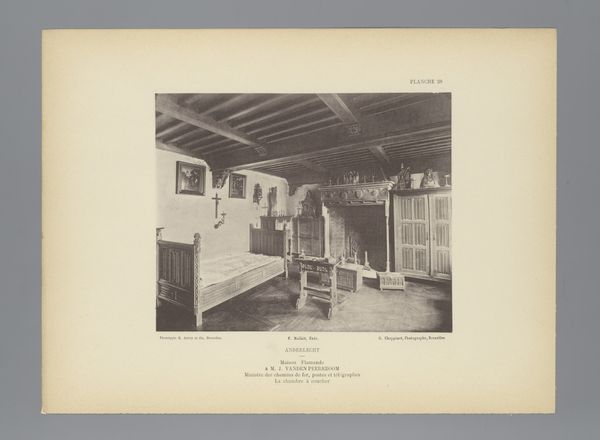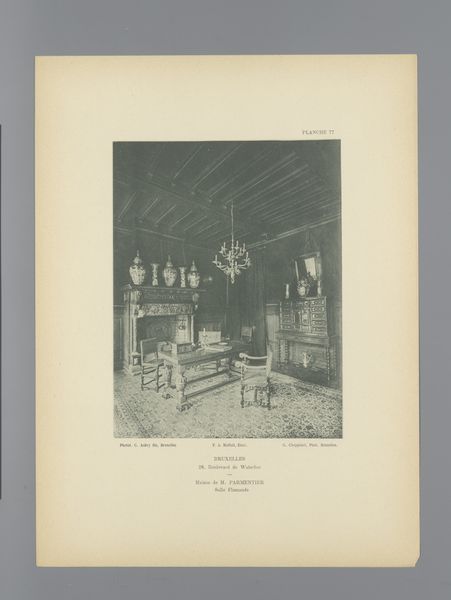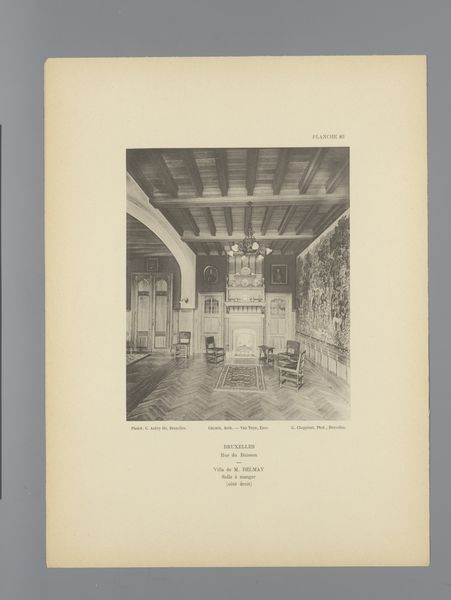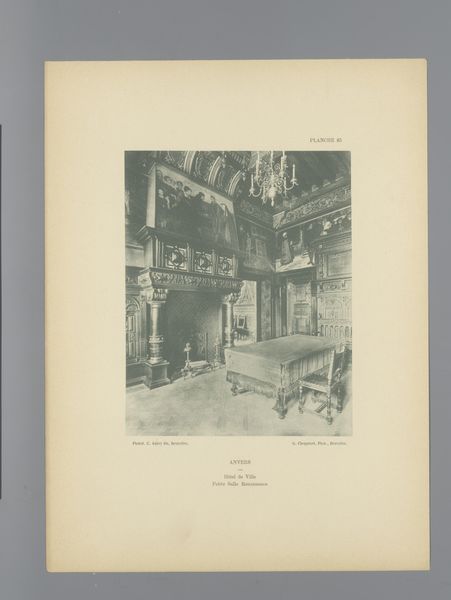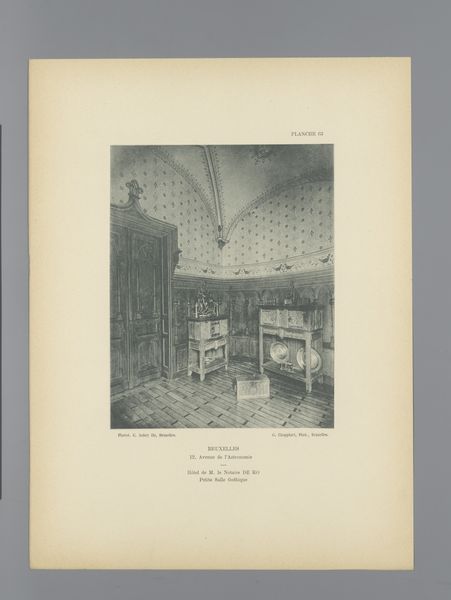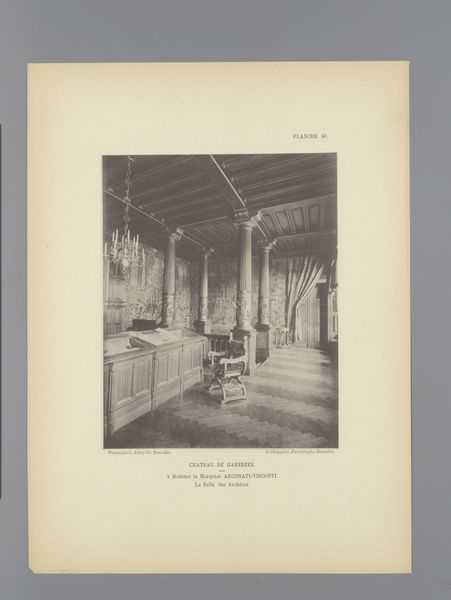
Gezicht op de trap van Lamoraal van Egmont in het Kasteel van Gaasbeek, België before 1898
0:00
0:00
print, photography
# print
#
landscape
#
photography
#
genre-painting
Dimensions: height 200 mm, width 157 mm
Copyright: Rijks Museum: Open Domain
Curator: This photograph by G. Choppinet, likely taken before 1898, captures a view of the staircase of Lamoraal van Egmont in the Castle of Gaasbeek, Belgium. Editor: The receding perspective pulls the eye into the depths of what appears to be an austere, yet ornate, interior. The stark grayscale tones amplify the architectural structure. Curator: Precisely. The play of light and shadow articulates the wooden architecture, with its heavily carved balusters. The subject, Lamoraal van Egmont, was a Flemish nobleman and general, a key figure in the lead-up to the Dutch Revolt. His associations with the castle tie it to powerful narratives of rebellion and national identity. Editor: The structural framework seems almost oppressively solid, those dark timbers and the weight of the banister give an impression of formidable grandeur, and consider how Choppinet used this architectural element to frame smaller pieces, perhaps artworks themselves, which we see adorning the surrounding walls. This placement creates internal dialogues. Curator: Consider the photograph itself as an object—a print, likely mass-produced. It represents the increasing accessibility of aristocratic spaces to the public eye. The Castle Gaasbeek's significance extended beyond the man who commissioned the stairwell. By this time period, castles as symbols became integrated into constructing narratives around nationhood. Editor: Agreed. There's a subtle tension here—a staged realism. The attention to depth creates this captivating visual experience. We move to analyze visual components of form, line, texture. And beyond just the stairs, our field of vision expands as the eye moves around. Curator: In a nutshell, we must consider how the photography democratizes access to historically-laden spaces and, moreover, promotes the commodification and circulation of aristocratic identity. Editor: Thank you, as usual, for providing a deeper understanding, highlighting a lot more meaning beyond form!
Comments
No comments
Be the first to comment and join the conversation on the ultimate creative platform.

